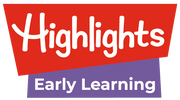5 Tips for Successful Preschool Classroom Management
It’s important to clearly establish and consistently stick to classroom policies and procedures when working with children. It communicates what is expected of students as well as what they can expect of their school day. Try these teacher-approved methods of successful preschool classroom management.

Routines
Whether lining up for bathroom breaks or transitioning between activities, preschool teachers are masters of routine. That’s great news for preschool students because they are creatures of habit who thrive in predictable environments. Bryant & Stratton College’s Blog Team emphasizes, “having a routine helps preschool kids feel secure, which can help reduce anxiety and stress in your classroom. Routines also help your students learn what is expected of them and what they should be doing at any given time.”
Starting each day the same way, with morning circle time for example, can allay separation anxiety for children who struggle parting with their caregivers. Morning routines also serve a variety of purposes like taking attendance, discussing the weather, and changing the calendar. These tasks occupy kids’ minds, helping alleviate stress.
Are you looking for a fun circle time activity that your preschoolers will love? Try this simple and fun Hidden Pictures activity! Download your free activity from Kindness Connections!
Transitioning from one activity to the next can prove challenging for students. Signaling the impending change is a great way to ease children into it. A verbal heads up such as, “Five minutes until we clean up” or visual cues like turning out the lights or placing a special object in its place can prepare preschoolers to switch gears. Songs and rhymes work wonders, too. “One, two, three, all eyes on me,” is a teacher favorite, with the students responding (and effectively switching gears), “One, two, all eyes on you!” Learning Without Tears offers several more transition activity options all suited for young children.
Classroom Jobs
Another fantastic way to effectively manage preschool classrooms is to include the children in the classroom duties. Little kids love to help! Assigning them specific tasks or jobs that assist with daily procedures makes them feel proud to contribute, while it also teaches them responsibility.
Classroom jobs should be age and ability appropriate, as well as communicated and modeled ahead of time. Tasks tailored for preschoolers are things like Recycling Leader, Lights Helper, and Pencil Patrol. Regularly switching jobs teaches each child new responsibilities, allowing them to take ownership of various aspects of the classroom. To keep track of who does what on which day, charts like this one from Amazon provide a great visual reminder.
Visuals
Creating classroom routines is great, but they only work if the children understand them! As teachers know, a lot of student behavior issues stem from a lack of understanding. The Association for Supervision and Curriculum Development, a nonprofit that supports public education, confirms, “One thing that makes a school environment challenging for a student is when they don't feel capable of doing what is expected of them.”
Early childhood educators typically use visual instructions in place of written ones. Pictures, charts, colors, and symbols communicate important information, ensuring children understand what’s expected of them. Displaying a flowchart of the daily routine is a visual representation of what the students will do. If the teacher points to a sink on the chart, students know it’s time to wash their hands. Kid-friendly labels with simple words accompanied by relevant images help students manage their time and complete tasks even before they can read.
Communication
At the onset of the year, it is important to communicate classroom expectations with the students as well as their caregivers. The hope is that daily routines and school policies will be discussed and reinforced at home. If a child begins to struggle with a certain routine, previously opened lines of communication make it easier and more comfortable to address their struggle. Teachers should always relay this kind of information respectfully, never passing judgement on the child or caregiver. Teacher tip: even though certain apps make school-to-home communication a breeze, when it comes to sharing sensitive information about their child, a face-to-face conversation or a phone call is more impactful.
Positive Reinforcement
There is plenty of science that supports rewarding appropriate behavior works better than punishing inappropriate behavior, especially when dealing with young children. Too often, negative consequences like limiting playtime or removing privileges are a school’s response to a student’s mistake. However, this method of classroom management doesn’t model the behaviors teachers want their students to exhibit, begging the question: what do teachers hope students learn from this? In contrast, positive reinforcement acknowledges good decision-making and appropriate behavior, clearly answering the question with: teachers want more of this from students!
Successful positive reinforcement relies on two things: proper timing and a reward. When a child is sharing or taking turns, the teacher should acknowledge it in the moment. The reward should follow shortly thereafter. Tangible things like sticker charts and small prizes, verbal praise like, “I’m so proud of you!” and physical praise like a high-five, are examples of traditional rewards. Positive Psychology offers many other ideas including happy phone calls home and even class parties to reward the children for their good performance.
A non-negotiable element of effective preschool classroom management is for teachers to model the behavior they want to see in their students. Doing so helps cultivate a positive learning environment, where children know exactly what is expected of them.
Did you love this article? Get regular updates about preschool products, teaching tips, and ideas to cultivate joyful learning in your classroom. Don't miss a thing - sign up today!
About the Author:

Stephanie Jankowski is an educator and author who lives in Pittsburgh, Pennsylvania. When she's not teaching or writing, she's spending time with her children, Brady, Ella, and Lyla, and marveling at just how short the years really are.


